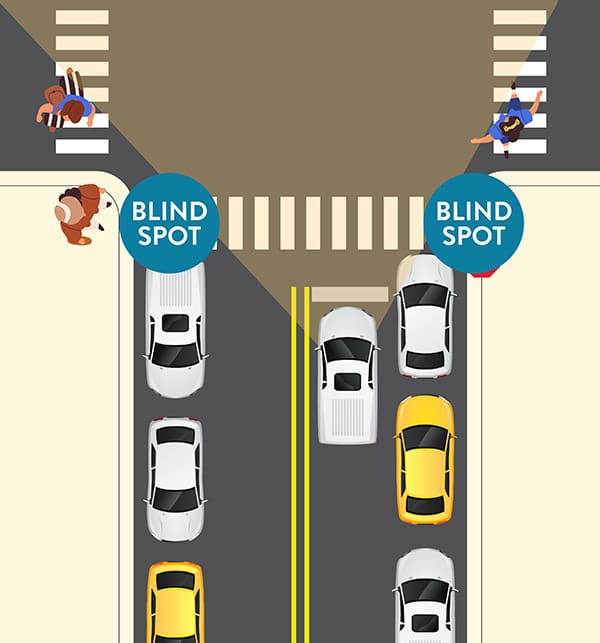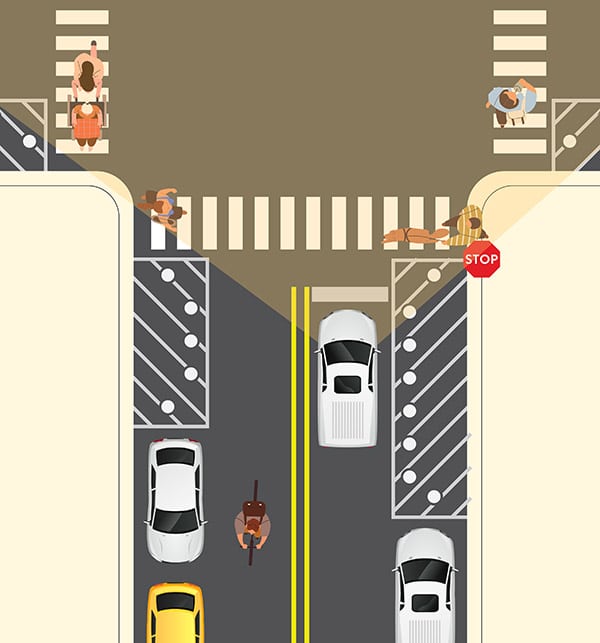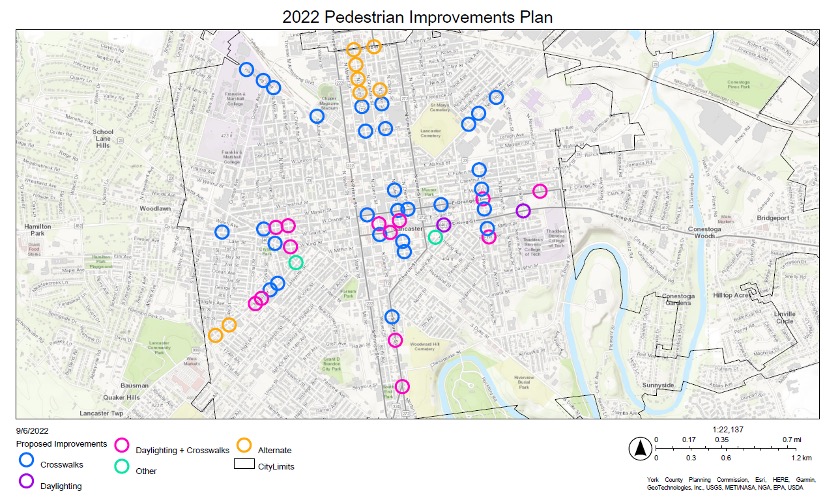Intersection daylighting is a safety improvement that makes streets safer by restricting parking near intersections. This makes it easier for drivers and pedestrians to see and respond to each other. Daylighting can be accomplished quickly and affordably by placing flexible, vertical posts at intersections and adjacent to crosswalks.
Why do we use intersection daylighting?
Intersection daylighting improves safety at intersections. Removing illegally parked cars reduces blind spots, giving drivers, pedestrians, and cyclists a better view of the intersection. This provides more time to respond to other approaching street users. It can also help slow turning vehicles down so they’re more likely to see and yield to pedestrians in the crosswalk.


